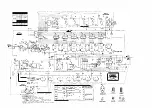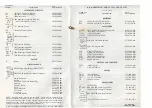
Fig. 6. Note that the unused digits register as zeros and
the dedmal point is retained
in
the kiloHerl!. position.
The reading is displayed as 000.321 kHz. which is
a<.:tually 321 Hz.
I
,-
I I
-, -,
KHz
, Se:.
-1�1=
A ,.. '
,
. . .
'
@
Cl
_, -, •
=,
,=
•
@
0
01,,=p
MHz
Fig.
5.
KHz
1-1 1-1 1-1
-, -,
I
•
© l_
t
I_
I I
_
!
•
=1
,=
I @
OVEA
MH,
Fig. 6.
If
a frequency of 21 Hz is measured, the display
would read as shown in Fig. 7, which is 000.021 kHz. It
should be noted here that as fewer digits are displayed,
the accuracy of the reading decrel!,ses, because of the
uncertainty of the last digit. With a tolerance of ±1
count on the reading displayed, a frequency of 21 Hz
may actually be displayed as 20, 21 or 22 Hz.
1 Sec
KHz
OFF• e •AUTG
,-, ,-,
,-, ,-,
.::,
'
@ I_I LI LI
•
LI /_ I
•
@
0
OVER
MHz
Fig. 7.
With the function switch in the 1 SEC. position, and
with the reading greater than 1 MHz
(
for example,
1,654,321 Hz) only the last six digits of the frequency
being measured will be indicated, as shown in Fig. 8.
Note that the kHz lamp is lit and that the OVER lamp is
flashing. This indicates that the most significant digit is
not being displayed in the frequency count.
1 Sec.
KHz
OH• • •
AGTO
/_ ,-
I_/
-, -,
I
e LI _
I
I
•
::1 I= I
•
@
0
OVER
MHz
8
Fig. 8.
Maximum resolution to the Hz is obtained under
these conditions because the least significant digit is
displayed; however, the first and most significant digit
cannot be determined.
When the condition described above occurs, the
function switch should be placed in the AUTO position.
The display corresponding to measurement of the
frequency 1,654,321 Hz would then appear as shown in
Fig. 9.
1 Sec
OFF• e •ALJTO
KHz
I
I_
,-
/_I �I :::J
@
I •
LI
_I
I _I
I_
@
•
0
OVER
MHz
Fig. 9.
Note that the MHz lamp is now lit and that the least
significant digit (I) is no longer being displayed at the
right end of the display, and the most significant digit
( 1) has been added at the left end of the display. When
the most significant digit is displayed. the OVER lamp is
off.
@
-, 1-1 I 1- I I -,
::,
-,
.
,_,
-'
-,
_,
KHz
:1
, Sec
QFF • e •ALJTO
0
OVER
MHz
Fig. 10.
Now consider the case in which a measurement is to
be performed at 39.654321 MHz. With the function
switch in the AUTO position, the frequency reading wili
be displayed as shown in Fig. 10. Notice that the two
least significant digits (2 and 1) have been deleted. Also,
the MHz lamp is lit, indicating the reading is displayed in
MegaHertz. Because the most significant digits (3 and 9)
are displayed, the OVER light is not
lit.
If
it
is desired to
obtain maximum resolution of the frequency being
measured (in other words, down to the Hertz), the
function switch must be placed in the 1 SEC position.
The reading will be displayed as shown in Fig. 11.
KHz
I
,-
I I
-, -,
I
e
e
CJ ::, -, • ::1
,=
I
@
ovrn
MHz
Fig.11.
Notice that the least significant digits (2 and 1) are
displayed and that the most significant digits (3 and 9)
are not displayed. Because the most significant digits are
not displayed, the OVER lamp will flash, indicating that
the actual frequency being measured is greater than that
displayed.
Remember that with the function switch in the
AUTO position, the most significant digits are
always
displayed and the kHz or MHz light will be on as
required to identify the units of measurement. For



















